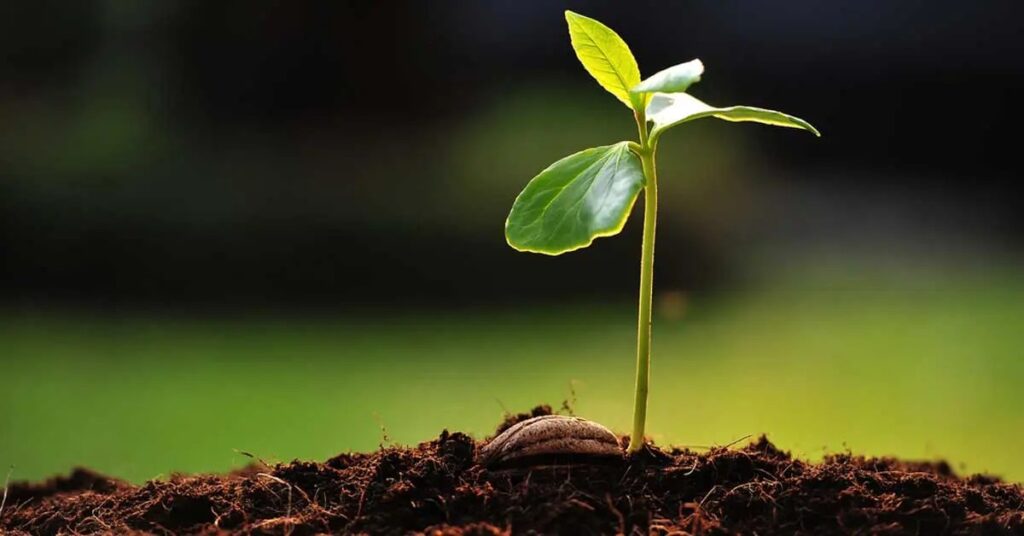Fig Fruit Tree grows at its best only when its roots are controlled or restricted. To produce more fruits, you must grow them in large seedbeds. The best position will be against the sun; the tree should face the south or east. Similarly, when we talk about the area, it should be warm and covered. Umbrella fig seeds are magnificent trees that beautifully essence the process of fertilization. It demonstrates lush greenery trees while providing amazing shady treats. Therefore, an Umbrella fig seed offers magnificent botanical significance, and its beautiful characteristics create vibrant landscapes.
If you wish to plant a fig tree on the ground, you will need special techniques. For that, you can bury a slab in the ground around the tree to give the same effect as large seedbeds. Furthermore, make sure to give these trees lots of light and warmth. However, you should make sure that the soil is fertile and should be well-draining and productive. Usually, most gardens contain these soils, but if you have a shortage, you may enrich any soil. Plenty of digging in fertilizers or compost can help you achieve good-quality soil.
How to Grow Fig Fruit Tree from Seed:
Growing fig tree from a seed is a long journey that requires lots of patience, consistency, and off course hard working. This process can be a rewarding experience, both physically and mentally. Let’s start our journey of growing fig tree together:
- Firstly, you should have a perfect seed. Selecting a female species is required if you want a fruit-bearing tree. This is essential because male trees are not capable of producing edible fruits.
- Cut a fig into two pieces and remove all its fleshy pulp and seeds.
- Then, soak all your fig seeds to ensure their viability. We will need only the floating seeds because they are usable.
- The roots of fig trees grow deep, so dig a pocket about 60 cm deep on the ground. The space from its surroundings must be at least 20cm.
- Prepare the soil with equal perlite, peat, and volcanic rock. Add some horticultural sand to the soil mixture and keep it moist.
- Now, initially place the fig seeds into seed trays. Keep them in a sunny area for at least 6 hours daily for 1-2 weeks. Keeping the seeds in the seed tray will make it easier for us to treat the entire seedling similarly. Remember to moisten the soil regularly in this sunny area.
- Great! Now, let’s work to restrict the roots, as I mentioned earlier. You can use old slabs or even stones to limit the area. Set boundaries all around the tree, approximately 2.5cm above the soil level.
- After 1-2 weeks, you will start noticing the growth of this tiny plant into a small, inches tall plant with at least two leaves. It’s time to take your tiny fig plant from the seed tray and spread it in the center of your hole.
- We can also fill some stone at the bottom of the hole for 10-20 cm deep.
- Then, fill the 60 cm hole with compost, firm it properly, and pour lots of water with love.
Growing a fig tree from seeds is a rewarding and fulfilling experience. It’s a testament to your caring, attention, and nurturing abilities. As you provide the ideal growing conditions-perfect sunlight, proper watering, and well-draining soil-you’ll witness the transformation of fig fruit seeds into a magnificent greenery tree. The beauty and rewards of this process will inspire and motivate you to continue your gardening journey.
Some Problems with Fig Fruit Tree and Tips:
Everything has pros and cons; similarly, growing a fig tree might cause some problems. Let’s have a look at them:
- Curling Leaves: A fig tree might have curly leaves. This happens due to under watering the plant. It could happen if you live in a dry climate and don’t have enough water.Tip: Water the plant regularly; keep the soil from drying up to 2 inches deep.
- Leaf spots: Different fungi may cause stem cankers, dying of stem, leaf spots, or eventually wilting. Therefore, remove fallen leaves and twigs and dispose of diseased leaves to ensure your tree’s health. Fig rusting usually starts from yellow and then turns into greenish spots. Later, it becomes brown, and leaves may turn curling or fall from the tree. Tip: Some fig rust may cause defoliation; in that case, spray copper fungicide on new leaves. Spray them for 3-4 weeks, especially in the rainy season.
- Damaged fruit: Anthracnose is a plant disease that causes discolored spots on fruit. Eventually, the specific infected fruit will drop to the ground naturally. In dry weather, fruit may also fall due to dryness. Therefore, the Gardener should look after all the fallen infected fruits and pick them up while keeping them hydrated. Tip: Water the plant deeply, and for the fully grown tree, watering is a must every 10-14 days.
- Sour Fruit: Sour figs may develop due to fermentation. Fungi, bacteria, or yeasts are the main reasons behind fermentation. Sometimes, a dry spell could also cause souring. In that case, you should keep disposing of the defected fruits. Tip: Watch each fruit before it ripens and pick it out.
Conclusion:
These fig seeds have the potential to grow and transform your garden with new horizons. However, you may also get help from nurseries, which sell umbrella fig seeds on existing online platforms. Other gardening enthusiasts have created endless avenues like groups and pages where they acquire these umbrella fig tree seeds.
In the end, when it’s time to harvest your fruit when it’s completely mature. At this time, the tree can provide you with more than just fruits; it also embraces beauty and fantastic shade. This beautiful shady tree will later on add a new dimension to the landscape of your garden. Before planting a fig tree, always remember and think about harvesting fresh figs straight from your fig tree.
FAQs
1. What are commonly used edible forms of fig?
This common fruit, figs, is edible fresh, baked, cooked, or even dried. Not only do humans enjoy figs, but birds, insects, and other wild animals also love to eat them.
2. How huge can a standard fig tree grow?
A fig tree commonly grows up to 30 feet tall or even higher. Cold regions may impact its height; usually, it grows 15-25 feet in colder temperatures.
3. Do all figs have wasps?
Some varieties of fig species have been pollinated by fig wasps. In happen because of tiny insects that crawl into the fruit to pollinate the flowers. Eventually, many homegrown fig trees don’t face this issue because they are self-pollinated.









